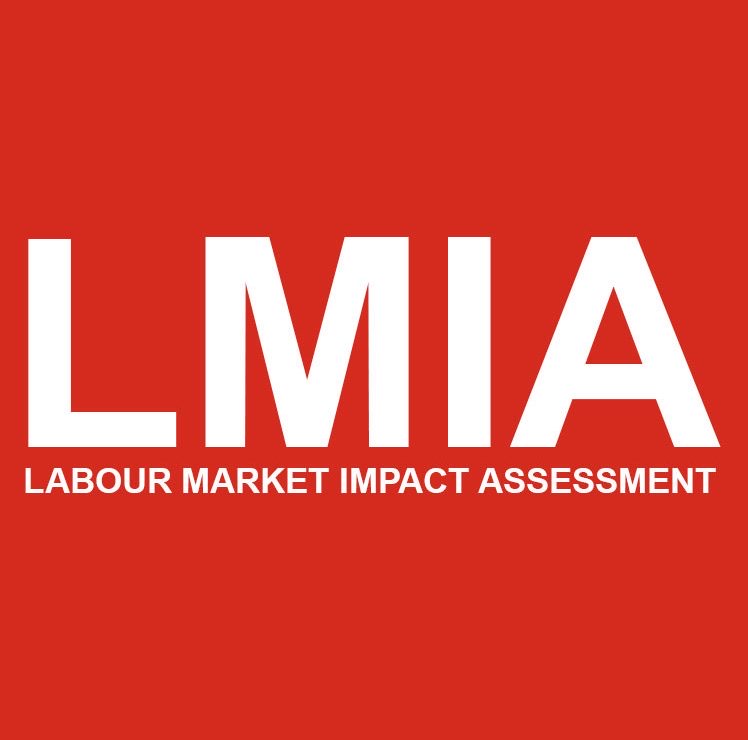PROGRAM OVERVIEW
Canadian employers are required to obtain a document from Employment and Social Development Canada (ESDC)/Service Canada stating that they can hire the temporary worker. This is known as a Labour Market Impact Assessment (LMIA). Labour Market Impact Assessment (LMIA) gives an employer permission to hire a temporary foreign worker. It shows that there is a need for a foreign worker to fill the job and no Canadian worker is available to do the job.
LMIA based work permit is a two-step application process. The first step is to apply for an LMIA to Service Canada. The purpose of the LMIA is to make sure that foreign workers are not being chosen over Canadian citizens and/or permanent residents those are qualified for the job. Positive LMIA determines that hiring foreign nationals in the specified occupation and at the specified work location is likely to have a positive or neutral impact on the Canadian labour market.
The second step is to apply for a work permit once an employer has obtained a positive LMIA from Service Canada. Work permit application is submitted to Immigration, Refugees and Citizenship Canada (IRCC).
PROGRAM REQUIREMENTS
Hiring High-Wage Workers
When hiring high-wage foreign workers, a transition plan is an important requirement for all Canadian employers seeking to employ a temporary foreign worker(s) at a wage that is equal to or above the provincial/territorial median hourly wage.
Hiring Low-Wage Workers
When hiring low-wage workers, a Transition Plan is not needed when applying for an LMIA. Unlike high-wage workers, low-wage workers are subject to a cap that limits the number of workers a business can employ.
Canadian employers with more than 10 employees will be restricted to a maximum 10% cap on low-wage temporary foreign workers.
Processing Fee:
All applications for LMIAs include a $1000 CAD processing fee which will not be refunded even if the result is negative. Certain applicants under the LMIAs for in-home caregivers may be exempt from this fee.
Business Legitimacy Documents:
Documents proving that the employer’s status as a legitimate Canadian business.
Transition Plan:
Employers must submit a plan for how they intend to address the need to hire foreign nationals. Eventually, employers are expected to hire Canadian citizens and permanent residents rather than TFWs.
Recruitment Efforts:
Employers must submit evidence that they made substantial efforts to recruit Canadian citizens and permanent residents to fill the position prior to hiring a TFW.
Wages:
Applications must include information regarding the TFWs wages. This will differentiate the high-wage positions from low-wage positions and ensure that TFWs are paid the same amount for labour as their Canadian equals.
Workplace Safety:
TFWs are entitled to the same standards of workplace health and safety as Canadians in the same position. For this reason, employers must provide evidence that TFWs will be covered by insurance which is at minimum equivalent to the health coverage offered by the province or territory where the business is located.
OUR VALUE – HOW WE MAKE THIS EASY FOR YOU
We understand that information can be found on the Internet, but it never tells the “whole story” related to your personalized situation. There are also lots of consultants, lawyers, and scammers out there that seem to make this more confusing than this actually is. Our value to you is that we simplify and direct this process for you from the start to the end of your immigration journey. We will guide you and provide:
- Personalized immigration advice and solutions that are tailored to your case and situation
- Comprehensive documents and information at every stage of the process, including information and tips that can’t be found on the IRCC website
- Affordable service with varying payment terms for the EE profile
- Collaboration with a licensed immigration consultant who will communicate and represent your case on your behalf
- Support and Assistance through every stage of the immigration journey, from the application to the landing and settlement in Canada.







